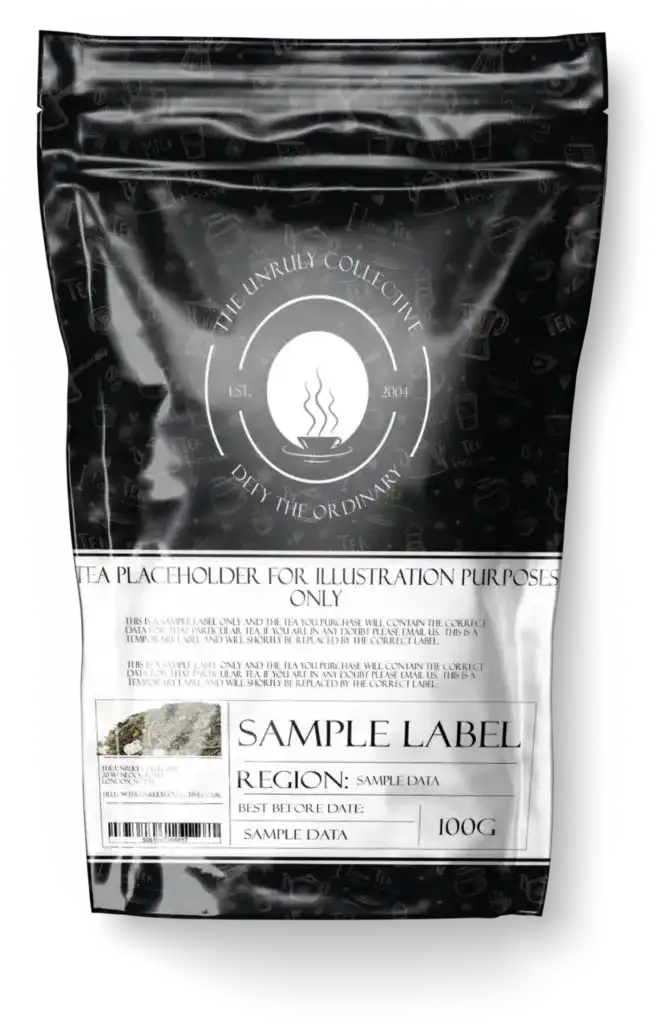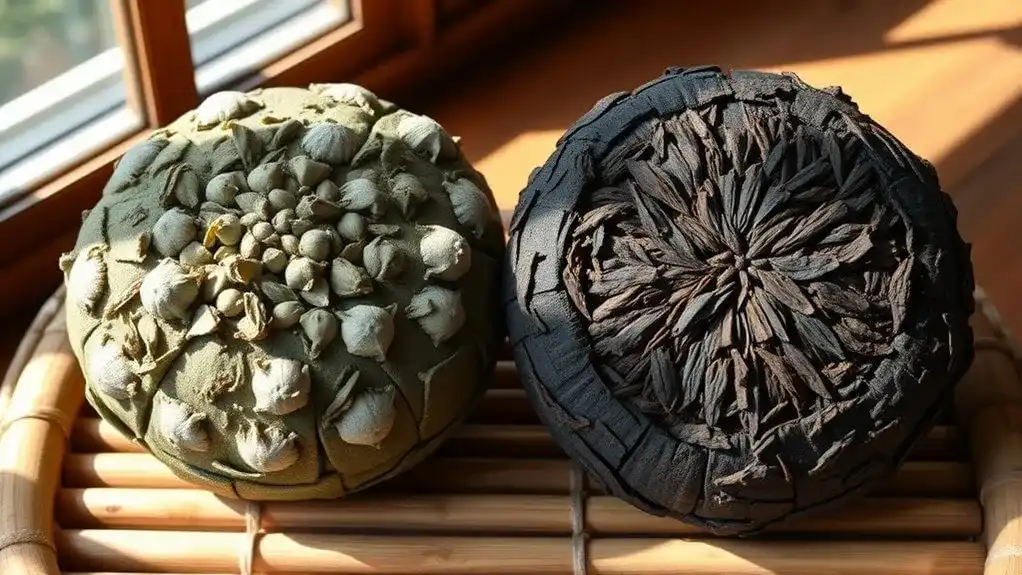Temperature and humidity levels directly impact how pu-erh tea ages and develops its complex flavors. The ideal environment maintains temperatures between 20-30°C and humidity levels of 60-70%. Different storage regions create unique taste profiles – Hong Kong's humid climate accelerates aging, while Kunming's drier conditions preserve original characteristics. Proper storage requires separating raw and ripe pu-erh teas and avoiding plastic containers. Understanding these vital factors reveals the tea's full aging potential.
Key Points
- Temperature range of 20-30°C promotes controlled fermentation while preventing excessive microbial growth during pu-erh aging.
- Humidity levels between 60-70% create optimal conditions for natural aging processes and flavor development.
- Higher temperatures and humidity levels accelerate aging, while cooler, drier conditions preserve original tea characteristics longer.
- Stable environmental conditions prevent unwanted mold growth and ensure consistent flavor development throughout the aging process.
- Natural darkening of tea color and gradual evolution from bitter to complex tastes indicate proper temperature and humidity conditions.
The Perfect Balance: Optimal Temperature and Humidity Ranges
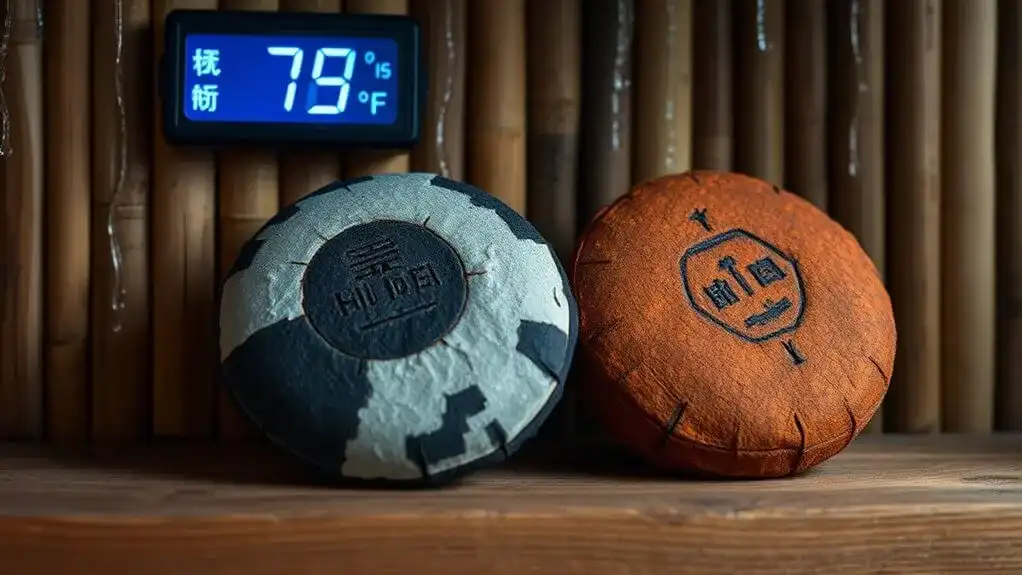
While aging pu-erh tea requires careful attention to multiple factors, temperature and humidity stand out as the most critical elements for successful development. The ideal environment maintains humidity levels between 60% and 70%, with moderate temperatures that allow for controlled fermentation process. These aging factors work together to create complexity while preserving the tea's essential character. Raw and cooked teas must be stored separately to prevent flavor contamination. Tea leaves require digital monitoring to track environmental conditions consistently.
Traditional aging locations like Hong Kong and Taiwan demonstrate how warmer climates accelerate aging, while cooler areas like Kunming show slower transformation rates. The key is finding the sweet spot: temperatures that aren't so high they cause over-fermentation, yet warm enough to promote proper aging. Similarly, humidity must be sufficient to enable microbial activity without creating wet storage conditions that could lead to unwanted bacteria growth. Regular monitoring reveals that a thin layer of white mold growth is generally acceptable and won't negatively impact the aging process. This delicate balance guarantees the best pu-erh development over time.
Regional Differences in Aging Environments
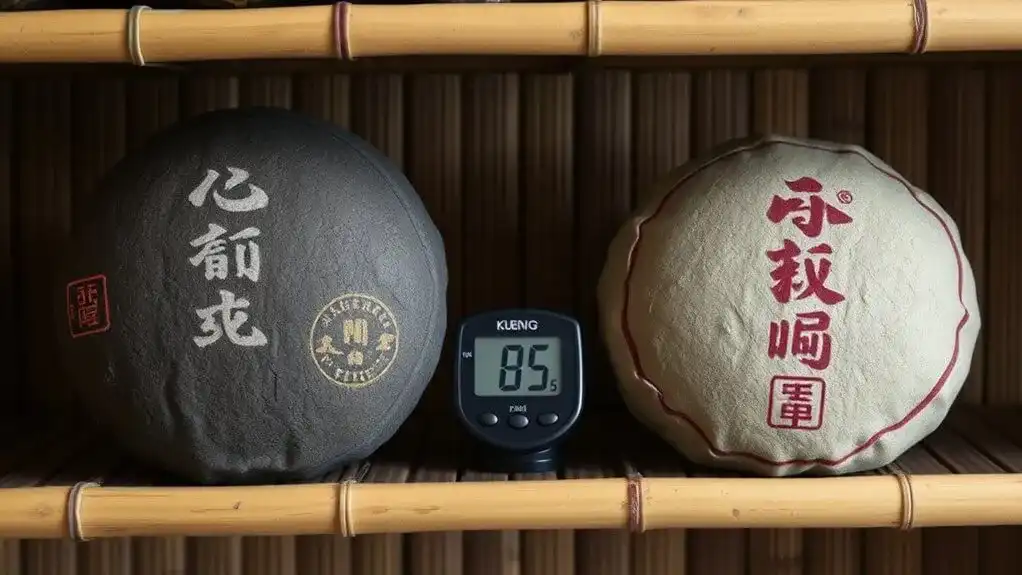
Although Pu-erh tea can age successfully in various locations, distinct regional environments create unique flavor profiles and aging trajectories. Storage techniques in different regions have evolved to optimize flavor evolution based on local climate conditions. Hong Kong and Malaysia's warm, humid environments accelerate aging and produce smoother, earthier notes, while Kunming's drier climate preserves original characteristics through slower aging. Clean storage conditions are essential for preventing unwanted odors from being absorbed by the tea during aging. Traditional aging methods relied on humid warehouses to develop the tea's complex flavors.
Key regional storage impacts:
- Hong Kong's high humidity speeds up aging, creating rich, mellow profiles
- Kunming's moderate humidity (70% or less) enables controlled dry storage
- Guangdong and Taiwan develop distinct regional flavors through natural humidity
- High-altitude warehouses promote slow, natural aging
- Beijing's cooler, drier conditions maintain original tea characteristics longer
Modern storage practices now focus on controlling oxidation and moisture levels to achieve desired flavor development while preserving tea quality.
Managing Storage Conditions for Long-Term Success
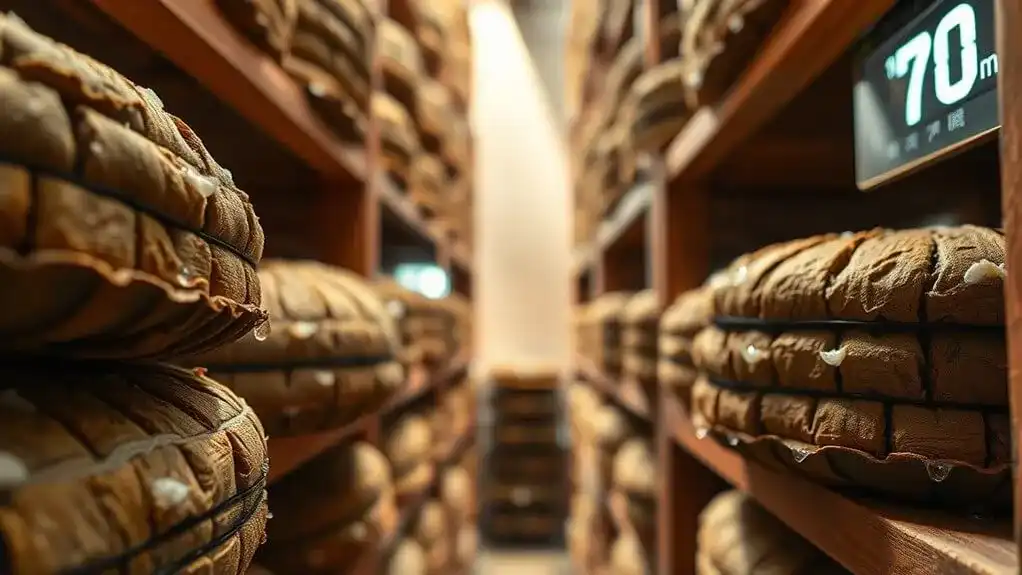
Successful long-term storage of Pu-erh tea depends on carefully managing temperature, humidity, and environmental conditions. Ideal storage techniques maintain temperatures between 20°C to 30°C and humidity levels of 50% to 70%. These parameters greatly influence the tea's aging process and flavor development. Indoor storage provides controlled environments for better protection against weather fluctuations.
Storage materials play an important role in the aging influence of Pu-erh tea. Traditional Indocalamus bamboo packaging and Zisha containers provide perfect air permeability, while clean cartons offer practical solutions for compressed tea storage. It is vital to avoid plastic materials, which can trap moisture and compromise quality. When handling tea cakes, always use clean dry hands to prevent oil contamination that could affect quality. Keeping raw and ripe Pu-erh teas in separate locations ensures optimal aging conditions for each variety.
Regular monitoring of storage conditions helps prevent issues like mold growth and flavor deterioration. Keeping the tea away from sunlight and strong odors guarantees proper development, while maintaining consistent environmental conditions can enhance both the tea's value and taste over time.
Signs of Proper vs. Improper Aging Development
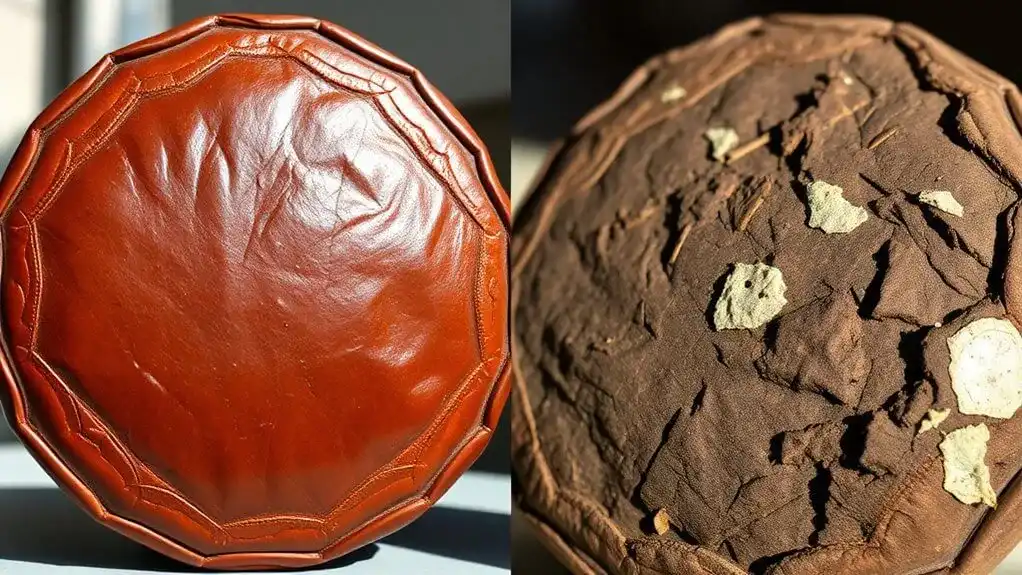
Distinguishing between proper and improper aging in Pu-erh tea requires careful observation of specific indicators. The aging indicators reveal whether the tea's development is on track or potentially compromised. In proper aging, flavor evolution shows a gradual transformation from bitter, vegetal notes to complex, refined tastes. The tea's color darkens naturally while developing desired characteristics. Traditional ethnic minority groups first discovered these aging methods through wild tea cultivation in Yunnan. Proper storage prevents the development of excessive frost formation, which can damage the tea's integrity. Keeping teas properly spaced allows for sufficient airflow and prevents flavor melding between different cakes.
Key signs of proper aging include:
- Temperature stability between 20-30°C
- Consistent humidity levels of 60-70%
- Progressive loss of bitterness over time
- Natural darkening of tea color
- Development of complex flavor notes
Warning signs of improper aging often manifest through unwanted earthy smells, mold growth, or extreme dryness. These issues typically stem from poor environmental control, leading to potential health risks and compromised tea quality. Regular monitoring helps guarantee ideal aging conditions are maintained.
Natural vs. Controlled Aging Environments

When considering pu-erh tea aging, natural and controlled environments each offer distinct advantages and challenges for collectors. Natural environments, like those in Hong Kong and Taiwan, feature higher temperatures and humidity levels that accelerate aging through increased microbial activity. The presence of natural microflora in these locations contributes to unique aging nuances and flavor profiles. Poor storage practices can result in unpleasant tastes and compromised aromas that diminish the tea's value.
Controlled environments, however, provide consistent conditions that result in more predictable outcomes. By maintaining temperatures between 10-20°C and humidity levels of 50-70% RH, collectors can better manage the aging process. While natural environments may produce distinctive characteristics through temperature and humidity fluctuations, controlled settings offer precise monitoring of mold and fungi growth. The choice between these environments often depends on whether collectors prefer predictable results or the potential for unique flavor development through traditional aging methods.
Conclusion
Traditional wisdom suggesting that pu-erh must be aged in its native Yunnan climate doesn't hold up under scrutiny. Tea collectors worldwide have successfully aged pu-erh by maintaining stable temperatures between 20-25°C and 60-70% relative humidity. While regional variations can influence development, the key lies in consistency rather than location. It's the steady maintenance of ideal conditions that determines a pu-erh's successful aging trajectory.

